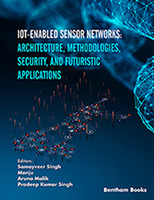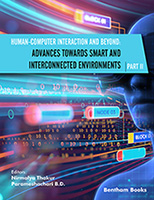FOREWORD 1
“The Internet of Things is the present and the future. It is composed of Smart Objects, objects, and sensors interconnecting between themselves to make actions and take measures of almost anything, anytime, and anywhere, and to automate different parts of our life. However, we need to manage all the generated data. Data that are from different parts of the world and data that can be accessed from anywhere. This is where Cloud Computing can help us to manage this big problem. Cloud Computing allows anybody to access data from anywhere. Besides, it provides us with different tools and 'infinite' capacity for storage and processing. Then, the Internet of Things and sensors need Cloud Computing, and Cloud Computing can provide us with tools to work with them.”
Cristian González García
University of Oviedo
Asturias
Spain
FOREWORD 2
“It is a distinct pleasure to write a foreword to this important new book “Introduction to Sensors in IoT and Cloud Computing Applications”, authored by Professor (Dr.) N.Ambika. This book is well designed and assembled an impressive and substantive array of important topics to explore recent advances in Sensors in Internet of Things (IoT) and Cloud Computing Applications.
It is the product of author Professor N.Ambika who is well-suited to tackle its subject-matter as she is an educator with vast experiences in the field of computer science, Sensor Network, IoT and Cloud Computing. This book consists of six chapters with the first Chapter beginning with Introduction and applications of sensors whereas the last chapter summarized the integrated system, its applications and open issues. After introduction, the First Chapter provides an overview of applications of sensors. Second Chapter discusses architecture and working of IoT, use cases, challenges the technology is facing and future directions. Third Chapter presents security issues, management issues, advantages, applications, challenges, and future directions. The fourth Chapter discusses the taxonomy, challenges and future directions and the fifth chapter summarizes the integrated system, its applications and some of the open issues.
Sensors in IoT and Cloud Computing is a fast-emerging area of computer science and communication significantly focused in recent past few years. IoT and Cloud Computing works towards growing efficiency of day to day tasks and both have paired connection, presents a great opportunity and influences several domains of modern technologies wherein IoT and Cloud Computing can be used including Smart home, Smart City, Industrial Internet, Connect Car and Intelligent Transport System etc.
I would like to congratulate the author for this wonderful effort, which will be very much beneficial to academics, research scholars, IoT and Cloud Computing analysts, Post graduate, graduate and undergraduate level students of Computer Science and Engineering, Electronics and Communication Engineering, Computer Applications and Information and Communication Technology and recommend this book for university textbook and a comprehensive research handbook.”
Dr. Nirbhay Chaubey, SMIEE
Dean of Computer Science
Ganpat University
India
FOREWORD 3
“This book is written by an author who is skilled in the subject. The author has good experience in this field. The book covered the latest technologies such as IoT and Cloud Computing. This book will be helpful to the reader to know about sensors, internet of things and Cloud computing. The organization of this book is good.”
Dr. Mansaf Alam
Editor-in-Chief
Journal of Applied Information Science
&
Associate Professor &
Young Faculty Research Fellow
DietY, Govt. of India
Department of Computer Science
Jamia Millia Islamia, New Delhi
India




